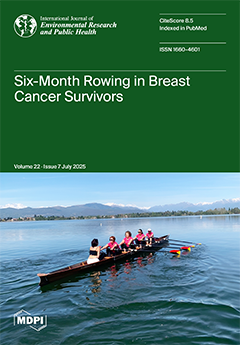Aims: To systematically review and synthesize qualitative research exploring the Breast Cancer Survivors (BCSs)’ perception of health promotion interventions and informing strategies to mitigate recurrence risk within five years post-treatment and improve clinical outcomes. Specifically, this study addresses the question: “How do women diagnosed with breast cancer perceive health promotion interventions for recurrence prevention?”
Design: A systematic review and qualitative meta-synthesis were performed.
Data Sources: A systematic search of scientific databases (CINAHL, MEDLINE, and Scopus) was undertaken in November 2024. The reference list was cross-referenced and hand-searched to identify additional articles.
Review Methods: Studies were included if they met the following criteria: they were primary qualitative studies focusing on BCSs within five years post-treatment, involving participants who had completed surgery, radiotherapy, or chemotherapy in the same time frame, as this period is critical for monitoring recurrence and implementing health promotion interventions. Only studies published in peer-reviewed journals and written in Italian, English, French, or Spanish were considered, provided that an abstract and the full text were available. Moreover, eligible studies had to be conducted in high-income or middle-income countries. Studies were excluded if they focused exclusively on advanced or metastatic breast cancer, if they involved mixed cancer populations without reporting separate data for BCSs, or if they were non-qualitative studies or gray literature. The review study protocol was registered in the PROSPERO database (CRD42024626033).
Results: The literature search identified 490 records, 13 articles from databases, and 3 articles identified via other methods (web and citation searching) that met inclusion criteria. A narrative synthesis approach allowed the emerging five themes: (I)
Challenges, (II)
Self-motivation and empowerment, (III)
The relationships as a facilitator, (IV)
Barriers to change, and (V)
Proactive support strategies.
Conclusions: Addressing internal and external factors that influence health behaviors is essential to improve adherence, reduce recurrence risk, and enhance quality of life. Tailored interventions, social support, and healthcare engagement are crucial in this effort.
Impact: Our meta-synthesis highlighted significant challenges as well as valuable resources for health promotion among BCSs, suggesting practical and tailored approaches to improving the adoption of healthy behaviors, supported by relationships and targeted support strategies.
Full article





